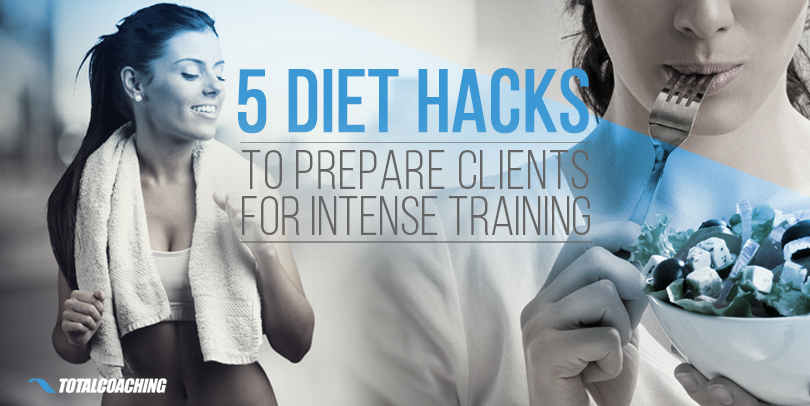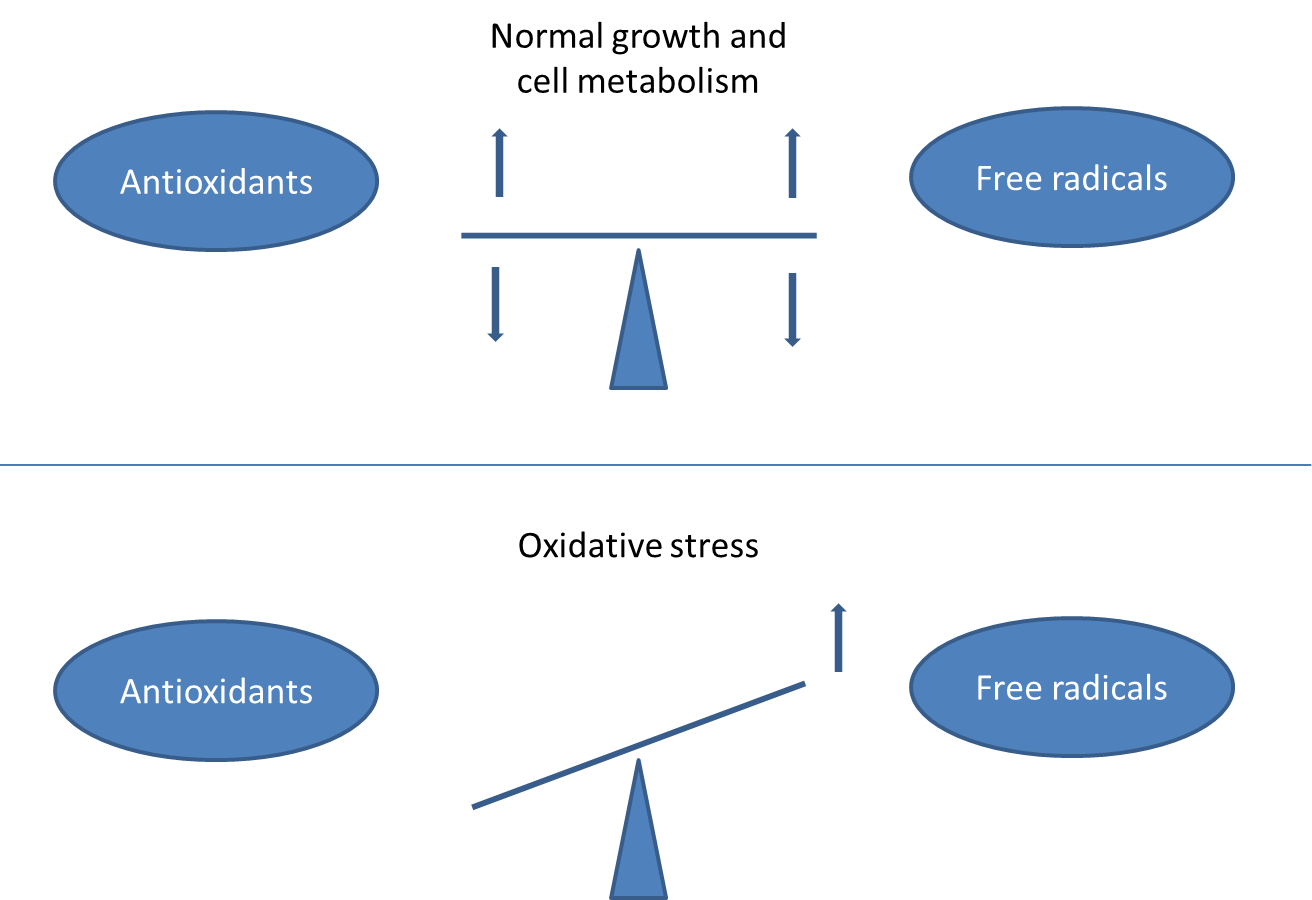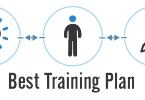As your clients start to see amazing results and their motivation kicks into high gear, they could be looking to go after even more. Now you've really got to deliver. How can you help them get in even better shape?

Increasing the frequency or intensity of their training sessions is a great step, but only if your clients are ready to make some shifts in their diet as well. Of course, you will consider increasing their calorie intake, as well as their protein, but would you think about the increased oxidative stress taking place during their ramped up physical activity?
What Is Oxidative Stress?
For those unfamiliar, oxidation is simply a reaction to oxygen. One common example you've likely seen before, is rust: Rust is the oxidation of iron. There can be many reactions in the body to the increased oxygen uptake that happens during more intense exercise, but one potential reaction is oxidative stress.
Oxidative stress occurs when there is an imbalance between the production of free radicals and the ability of the body to use antioxidants to detoxify them. A build up of free radicals can cause serious damage to a person's DNA, leading to depressed immunity, disease, and a host of health-related issues associated with premature aging.

As a personal trainer, it's your job to guide your clients' dietary decisions. You want them to reach the pinnacle of good health. After all, their success directly reflects on your ability to provide top-notch service.
Your clients' health, fitness, and overall wellness is a direct reflection of the work YOU do!
If your clients don't consider oxidative stress, there is a likelihood that they will not see the progress they want. Plus, they will be at risk of a weakened immune system. And, if your best clients get sick and start missing training sessions, your business (and bottom line) will suffer.
5 Diet Hacks That Will Help Beat Symptoms of Oxidative Stress
Here are 5 dietary hacks I have found to combat the symptoms of oxidative stress. Use these with your clients who are increasing the intensity of their training:
#1. Ditch the Vitamin C Supplements
This may seem like a shocker to some since we have grown up associating Vitamin C with greater health and a boosted immune system.
Normally this is the case, but there is an interesting occurrence that happens when you take Vitamin C, whether it be Citric or Ascorbic acid....
When you (or your clients) engage in intense physical activity, your body responds to this physical stress by ringing alarm bells within your immune system to ramp up production of antioxidant enzymes. This enables your body to begin combating the DNA damage done by the act of exercising intensely.
Interestingly, this stress-fighting adaptation can be undermined by taking the trusty Vitamin C supplements we have become so accustomed to taking. It's true, relying on Vitamic C supplements can actually reduce your body's ability to fend off DNA damage, thus, making it more susceptible to harmful free radicals.
Worried about dropping your Vitamin C supplements? Keep reading...
Vitamin C Rich Foods For Your Optimal Health:https://t.co/qyAn5AQzSh#Vitaminc #healthcare #life #food pic.twitter.com/cYxqNso7JN
— Healthy Food Master (@HealthFoodWork) May 30, 2016
#2. Eat (not drink) Your Tropical Juices
We all know that feeling of burning muscles that comes when pumping out that last set in the gym. This sensation occurs during muscle fatigue and is a sign that our body is unable to handle the excess lactic acid building up in our muscles. It's also the point when oxidation is in full effect.
One research study demonstrated a 27% decrease in lactic acid build up when participants were given orange juice during peak moments in their training. This led to less muscle pain, quicker recovery, and less oxidative stress.
Read our latest article about Lactic Acid - Feel the Burn https://t.co/24rid70hKv #fit #fitness pic.twitter.com/lkkbbQGN0a
— Providence Naturals (@ProvidenceNat) May 18, 2016
One thing to take into consideration, however, is the sugar spike associated with drinking fruit juices. With sugar levels nearly identical to those found in a can of Coke, it would be wise to have your clients opt out for some orange slices after an intense training session, rather than reaching for the OJ.
#3. Feast on Beets
Through exercise, your body expands its ability to intake oxygen and convert it to energy. However, as your body takes in more oxygen, it is being exposed to the risk of more oxidative stress. This presents a bit of a conundrum for your hard-working clients who will need every ounce of energy they can find.
A ground breaking study sought to discover how people could create and consume more energy during exercise, without the need for significantly more oxygen intake. The solution? Beet juice.
Using Beet Juice to Improve Performance https://t.co/qawWeaHd0n pic.twitter.com/HtSuBaQTRV
— sportsleepcoach (@sportsleepcoach) May 23, 2016
This study found that athletes who drank beet juice were able to burn more energy and display greater endurance, without increased oxygen intake. The researchers concluded that the nitrates in beet juice created this increased exercise efficiency.
It's time to research some healthy beet recipes to pass along to your clients!
#4. Drink More Beer! (close, but not really)
As we discussed earlier, one negative result of oxidative stress can be a suppressed immune system. This makes things a bit confusing, because exercise has been shown to improve immune function, but oxidation (which comes with exercise) can reduce immune function. So which is it?
Provided you don't overdo it, #exercise can even boost your #immunity and ward off #sickness. pic.twitter.com/IfBHySP3lR
— MainStreetRadiology (@MainStRadiology) April 29, 2016
Both, actually. Depending on the individual, and many other physiological and environmental factors, increasing the amount or intensity of exercise can help or hinder a person's immune function. That's why it's important to take as many steps as possible to bolster your (and your clients') immune performance.
Be aware that high-level physical training can actually depress your clients' immune function!
You can think of your immune system as it relates to exercise in a "J" formation (i.e. picture a line graph where the line looks like a "J"). As you become more physically fit, your risk of infection declines. Then, as athletes move toward intensive aerobic training, that dip shoots up and you become more likely than before to get an infection. Your immune system becomes so focused on repair that it overlooks some other harmful intruders!
Some recommendations for avoiding sickness such as, “Wash your hands more frequently,” or, “Don’t touch your face at the gym,” are great, but are also pretty basic. What else can you do to help your clients boost immunity to sickness?
Tell them to drink more beer!
Well, maybe that's not the best advice, especially for your clients who are looking to lose weight, but the yeast found in beer can be really helpful.
This study found that when marathon runners were given nutritional (or Baker's/Brewers) yeast before a race, they were far less likely (nearly 50%) to contract a respiratory infection compared to the placebo group. Furthermore, when asked about their emotional state, participants had a strong improvement in mood compared to those taking the placebo.
A deterioration in mood is a common phenomenon that elite athletes often experience before and after a race. Not only can nutritional yeast combat this issue and boost your immune response, but it also offers a tasty, cheese-like alternative to any vegans out there looking to season their snacks and soups.
#5. Don’t Get Hung up on Super Foods
I have to admit that there’s a natural curiosity about fruits and vegetables labelled as the next great super food. I have fallen victim to this myself while looking for a "silver bullet" to deal with various ailments. Not to say all super food claims are false or misleading, but I think the focus on these flashy foods can leave shoppers star struck.
The search for "super foods" has overshadowed some of the tried and true health foods that have their own hidden, or less talked about, properties. Let's not forget that...
When looking for something healthy to put in your body, it's important to keep in mind colour profiles. The more pigments you have in your diet, the better.
Eat better with #antioxidant rich, colourful #fruits and #vegetables https://t.co/ChbOFRtYuG pic.twitter.com/jBnS9bRGKJ
— Sydney Chiro Clinics (@SydChiroClinics) May 17, 2016
Also known as flavonoids, these colourful creations have been shown to inhibit “XO activity.” XO activity is the main contributor to free radicals creation during physical activity, and is also tied to the pathogenesis of diseases like cancer and gout.
So, when your clients adopt a more intense workout program, it's important that their diet is as colourful as the rainbow. Help them identify as many greens, reds, and purples as possible, and help them learn to easily prepare these foods so that they don't feel overwhelmed.
Hopefully, you now feel better equipped to prepare your clients for increased training intensity and the long road ahead that comes with a lifetime of peak fitness.
These dietary tips and tricks are designed to keep your appointment book full with happy, healthy clients. Sharing these little-known secrets will show them just how committed you are, not only to their fitness, but also to their overall health and well-being.




